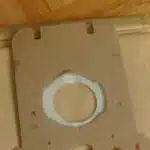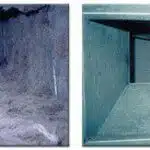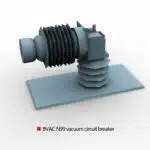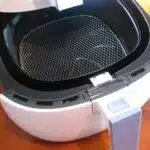Maintaining a clean and functional vacuum is crucial for keeping your home clean and healthy. Shark vacuums are a popular choice for many households due to their powerful suction capabilities and versatile features. However, like any other appliance, they require regular maintenance and cleaning to operate efficiently.
One of the essential parts of a Shark vacuum is the filter. It traps dirt, dust, and allergens, preventing them from circulating back into the air you breathe. Over time, the filter can become clogged with debris, reducing its effectiveness and potentially damaging your vacuum’s motor. In this article, we will discuss how to clean your Shark vacuum and its filter to ensure it remains in optimal working condition for years to come.
Understanding The Importance Of Regular Vacuum Maintenance
Imagine a house as a living organism, much like the human body. Every part of it has its own function and contributes to the overall well-being of the structure. The roof shields from rain and sun, the windows let in light and air, and the floors provide a surface for walking. Just like how we must take care of our bodies through exercise and healthy eating, we must also maintain our homes through regular upkeep. One important aspect of home maintenance is vacuuming, which not only keeps your floors clean but also ensures that your vacuum cleaner functions properly for years to come.
The importance of regular vacuum maintenance cannot be overstated. A well-maintained vacuum cleaner not only prolongs its lifespan but also saves you money in the long run by preventing costly repairs or replacements. Moreover, it ensures that your home remains free from allergens such as dust mites, pollen, and pet dander that accumulate in carpets and upholstery over time. This is especially crucial for individuals who suffer from allergies or respiratory issues.
The benefits of maintaining your shark vacuum are numerous. It not only improves indoor air quality but also enhances cleaning efficiency by ensuring that suction power is at its maximum capacity. Furthermore, regular maintenance prevents clogs that can damage internal components and reduce performance. With proper care, your shark vacuum will continue to provide you with excellent cleaning results for years to come. Now let’s move on to identifying the parts of your shark vacuum so you can start maintaining it like a pro!
Identifying The Parts Of Your Shark Vacuum
To properly maintain your Shark vacuum, it is important to first understand the different parts that make up the machine. The main body of the vacuum is composed of the motor housing, dustbin, and handle. The motor housing contains the motor and brush roll, which work together to pick up dirt and debris from your floors. The dustbin is where all the collected debris is stored, and can be easily emptied when full. Lastly, the handle allows for easy maneuverability of the vacuum during use.
Attached to the main body of the vacuum are several other important parts. The hose connects to the back of the motor housing and allows you to reach areas that may be difficult to access with just the main body. There are also various attachments that can be added to the end of the hose for specialized cleaning purposes. Additionally, there are filters located throughout your Shark vacuum that help trap allergens and other particles as they pass through.
Understanding assembly is also key in identifying all parts of your Shark vacuum. When you first receive your machine or after disassembling it for cleaning, it may be necessary to reassemble it before use. Referencing your owner’s manual or online resources can help ensure that all parts are correctly assembled and in working order. Taking note of how each part fits together will also make future cleaning and maintenance easier.
- Check out instructional videos online for visual reference on assembling your Shark vacuum.
- Take note of how each attachment connects to your machine for more efficient use.
- Regularly inspecting all parts for any damage or wear will help prolong their lifespan and keep your machine working effectively for longer.
Now that you have identified all parts of your Shark vacuum, let’s move on to preparing it for cleaning by removing any debris or blockages from its various components.
Preparing Your Vacuum For Cleaning
Having identified the different parts of your Shark vacuum, it’s time to prepare it for cleaning. Before you start, ensure that the vacuum is unplugged and all its components are cool to the touch. Empty out the dustbin or collection chamber and check if there are any blockages in the hose or brushroll.
Vacuum maintenance tips involve ensuring that you clean your unit frequently to prevent dust and debris buildup, which could cause it to malfunction. Best cleaning practices dictate that you pay attention to the filter as well. The filter plays a crucial role in trapping dust and allergens from the air before it is released back into your home. Over time, however, this buildup reduces suction power while also releasing these particles back into the air. This is why regular cleaning of your filter is essential.
Removing and disassembling the filter can be a simple process with some models of Shark vacuums. Check your user manual for specific instructions on how to detach the filter from its housing. Once removed, gently tap it against a hard surface to loosen dirt and debris trapped inside. You can also rinse it under running water until clear water flows through it. Avoid using soap or other cleaning products on filters as they could damage them over time. After cleaning, leave them out to dry completely before reinserting them back into place in your Shark vacuum for continued use.
Removing And Disassembling The Filter
To properly clean your Shark vacuum, it is crucial to remove and disassemble its filter. First and foremost, turn the vacuum off and unplug it from the power source. Locate the filter by checking the user manual or looking for a labeled compartment on the device. Once you have found it, gently twist or pull to remove it from its housing.
Next, dispose of your old filter according to local regulations. Most filters are not recyclable due to their synthetic materials, so it is important to dispose of them properly. Check with your local waste management facility for specific instructions on how to do this in your area. Once you have disposed of the old filter, replace it with a new one that matches your vacuum’s make and model.
Replacing the filter is easy and straightforward once you have purchased a compatible replacement. Simply insert the new filter back into its housing until it clicks into place. Be sure to double-check that it is secure before using your vacuum again. Regularly replacing your filter will ensure that your Shark vacuum functions efficiently and maintains optimal suction power.
To continue maintaining your Shark vacuum’s performance, assess the condition of your filter periodically. This ensures that you always have an adequate supply of filters on hand when they need to be replaced. In the next section, we will discuss how to assess whether or not you need a new filter for optimal cleaning results without missing any dirt particles from different surfaces around your home!
Assessing The Condition Of Your Filter
Before jumping into the actual cleaning process of your Shark vacuum filter, it is essential to evaluate the condition of your filter. An idiom that comes to mind is ‘prevention is better than cure.’ Assessing filter quality beforehand helps you determine whether it needs cleaning or replacing. Furthermore, this practice ensures that your vacuum runs effectively and efficiently.
To assess your filter’s quality, remove it from the vacuum and examine it closely. Look out for signs such as clogging, discoloration, or damage. If you notice any of these signs, then it’s time to clean or replace the filter. However, if you’re unsure about its condition, hold it up against a light source. If light passes through easily, then your filter is in good condition.
Replacing worn filters is crucial for maintaining your Shark vacuum’s performance and longevity. Filters are subject to wear and tear over time due to usage and environmental factors such as dust and debris accumulation. If you notice that cleaning isn’t sufficient in enhancing the quality of your filter, consider purchasing a replacement. Always ensure that you use genuine Shark replacement filters for optimal performance.
Now that you’ve assessed the condition of your filter let’s move on to choosing the right cleaning method to ensure its longevity and effectiveness in trapping dust particles from your home floors.
Choosing The Right Cleaning Method
When it comes to cleaning your Shark vacuum, choosing the right method is crucial. One of the first things you should consider is the type of accessories that come with your vacuum. Some models may include specialized attachments for cleaning different surfaces or hard-to-reach areas. Make sure to familiarize yourself with these accessories before beginning the cleaning process.
Another factor to consider is the type of cleaning products you use. While some vacuums may only require a simple wipe down with a damp cloth, others may benefit from a more thorough cleaning using specialized products. It’s important to read the manufacturer’s instructions carefully and only use products that are recommended for your specific model.
In addition to choosing the right accessories and cleaning products, it’s also important to follow proper safety precautions during the cleaning process. This may include unplugging your vacuum before beginning any maintenance tasks and avoiding contact with sharp or moving parts. By taking these steps, you can ensure that your Shark vacuum remains in excellent condition for years to come, providing reliable performance whenever you need it.
As you prepare to clean your Shark vacuum, one important step is removing and washing the filter with water. This will help remove any built-up dirt or debris that has accumulated over time, ensuring that the suction power remains strong and consistent. To do this, simply remove the filter according to manufacturer instructions and rinse it thoroughly under running water until all debris has been removed. Once cleaned, allow it to air dry completely before reinserting it into your vacuum.
Cleaning The Filter With Water
- Before attempting to clean the filter of a Shark vacuum, it is important to ensure that the appliance is unplugged from power sources.
- To begin the cleaning process, the filter of the Shark vacuum should be removed and placed in a sink or bucket filled with warm water.
- A gentle detergent can be used to help remove any debris or dirt particles from the filter.
- After rinsing the filter with water and detergent, it should be dried thoroughly before being placed back inside the vacuum.
Preparing The Filter
When it comes to maintaining the efficiency of your Shark vacuum, cleaning the filter is a crucial step. Before you start cleaning the filter with water, it’s important to prepare it properly. There are two ways to clean a filter – rinsing or soaking. Rinsing involves running water over the filter while soaking requires submerging it in water.
If you opt for rinsing, make sure you hold the filter under running tap water to remove any visible dirt or dust particles. Gently rub your fingers over the surface of the filter to dislodge any caked-on debris. On the other hand, if you choose to soak the filter, fill a large bucket with warm soapy water and immerse the filter in it for at least 10-15 minutes.
Once you have cleaned your Shark vacuum’s filter using either method, it’s time to dry it out. You can either air dry or towel dry your filter depending on your preference. To air dry, place the filter in an area with good air circulation and let it sit for at least 24 hours until all moisture evaporates. Alternatively, use a soft cloth or paper towel to gently pat down and absorb any excess moisture from the surface of the filter before leaving it out to dry naturally. By following these simple steps, you’ll be able to keep your Shark vacuum working efficiently for years to come!
Rinsing With Water
To maintain the efficiency of your Shark vacuum, cleaning the filter with water is an essential task that should be done regularly. There are two effective cleaning techniques for cleaning the filter: rinsing and soaking. In this paragraph, we will discuss rinsing with water as an effective technique for cleaning the filter.
Rinsing with water involves holding the filter under running tap water to remove any visible dirt or dust particles. It is important to use lukewarm water and avoid using hot or cold water as it may damage the filter. Gently rub your fingers over the surface of the filter to dislodge any caked-on debris. However, one common mistake that people make while rinsing is using too much force while rubbing their fingers on the filter, which may cause damage to it.
After rinsing, gently shake off any excess water from the filter and then leave it out to air dry completely. Avoid exposing it to direct sunlight or heat sources as this may damage it further. Another common mistake people make is not drying the filter out completely before installing it back into the vacuum cleaner. This may lead to mold growth and bad odors in your vacuum cleaner.
In conclusion, rinsing with water is an effective technique for cleaning your Shark vacuum’s filter when done correctly. By avoiding common mistakes such as using too much force while rubbing your fingers on the filter and not drying it out completely, you can keep your Shark vacuum working efficiently for years to come.
Cleaning The Filter With Soap And Water
After cleaning the filter with water, you can take the cleaning process a step further by using vinegar. Vinegar is a natural and cost-effective way to deep clean your vacuum’s filter. Simply mix equal parts of water and vinegar in a container, and soak the filter for at least 30 minutes. Rinse it thoroughly under running water, and let it air dry completely before replacing it.
If you prefer not to use vinegar, there are alternative methods for cleaning your vacuum’s filter. One option is to use baking soda instead. Mix baking soda with warm water until it forms a paste-like consistency, then apply it to the filter and allow it to sit for 15-20 minutes before rinsing it off with water. Another option is using compressed air to blow out any dust or debris from the filter.
Remember that regular maintenance of your vacuum’s filter is crucial for ensuring optimal performance and longevity of your appliance. If you notice that the filter is particularly dirty or clogged, consider deep cleaning it with either vinegar or an alternative method before resorting to purchasing a new one.
Moving forward, another effective way of cleaning your shark vacuum’s filter is through the use of a brush. This method involves gently brushing off any dirt or debris from the surface of the filter before washing it with soap and water or soaking it in vinegar solution. Using a brush ensures that all dirt particles are removed from hard-to-reach areas of the filter, leaving it looking brand new and functioning optimally once again.
Cleaning The Filter With A Brush
Cleaning frequency is an essential factor to consider when maintaining your Shark vacuum’s filter. The more you use the vacuum, the more frequently you should clean the filter. Ideally, it would be best if you cleaned it every three months. However, suppose you have allergies or pets; in that case, you should clean the filter more often to remove allergens and pet hair from the filter.
One alternative cleaning method for your Shark vacuum’s filter is using a brush to dislodge dust and dirt particles. You can purchase a specialized brush designed for cleaning filters, but any soft-bristled brush will do. Start by removing the filter from your Shark vacuum and tapping it on a hard surface to remove as much debris as possible. Then gently brush both sides of the filter until all visible dirt has been removed.
Another alternative method for cleaning your Shark vacuum’s filter is using compressed air or an air compressor. This method blows high-velocity air through the filter, removing any accumulated dust or dirt particles effectively. However, this method may not be suitable for everyone due to its noise level and cost of purchasing an air compressor.
Transition: Now that you have cleaned your Shark vacuum’s filter with a brush or compressed air, let’s move on to drying the filter properly without damaging it.
Drying The Filter
- Air-drying the filter is an important part of the cleaning process for shark vacuums, as it helps to remove dust and debris from the filter.
- Cleaning the filter requires the use of a soft-bristled brush to remove any dirt or debris from the filter.
- Disinfecting the filter is also important, as it helps to remove any bacteria or germs that may be present.
- To disinfect the filter, use a mild disinfectant or bleach solution to ensure that the filter is free of germs and bacteria.
- Allow the filter to air-dry completely before reassembling the vacuum.
- To ensure the filter is in good condition, it is recommended to clean and disinfect the filter on a regular basis.
Air-Drying The Filter
Ensuring that your Shark vacuum is clean and functioning properly requires regular maintenance, including cleaning the filter. Once you have cleaned the filter, it is important to dry it thoroughly before reusing it. In this article, we will discuss air-drying techniques that can help prevent mold growth on your Shark vacuum’s filter.
The first step in air-drying your Shark vacuum’s filter is to remove as much water as possible after washing it with soap and water. Gently squeeze out excess water without wringing or twisting the filter. It is important to handle the filter carefully to avoid damaging it while removing excess water.
Next, find a warm and well-ventilated area where you can hang the filter for air-drying. Avoid placing the filter in direct sunlight or near a heat source since excessive heat can damage the filter’s material. Instead, choose an area with good airflow that allows the filter to dry naturally.
Lastly, allow sufficient time for air-drying before reusing your Shark vacuum’s filter. Depending on humidity levels and temperature, this process may take up to 24 hours. Do not rush the drying process by using a hairdryer or other artificial means of drying since this can cause damage to the filter material. By following these simple steps, you can ensure that your Shark vacuum’s filter remains clean and functional while preventing mold growth from dampness.
Cleaning The Filter
Maintaining a clean and functional Shark vacuum requires regular cleaning of the filter, which is responsible for trapping dust and debris. However, after washing the filter, it is essential to dry it thoroughly before reusing it. Air-drying the filter is an effective method that can prevent mold growth due to dampness.
If you prefer alternative cleaning methods, there are other ways to keep your Shark vacuum’s filter clean. For instance, you can use a soft brush to remove dirt or debris from the filter without damaging it. Additionally, if the filter is too dirty or damaged beyond repair, consider replacing it with a new one.
When drying the filter by air, ensure that you handle it carefully to prevent damage. After gently squeezing out excess water, hang the filter in a warm and well-ventilated area with good airflow. Avoid exposing the filter to direct sunlight or heat sources as this can damage its material. Allow sufficient time for air-drying before reusing your Shark vacuum’s filter – this process may take up to 24 hours depending on temperature and humidity levels. Remember not to rush the drying process by using artificial means such as a hairdryer since this can cause damage to the filter material.
By following these simple steps for cleaning and drying your Shark vacuum’s filter properly, you can prolong its lifespan while ensuring effective performance in maintaining cleanliness in your home. Remember that regular maintenance of your Shark vacuum’s components will save you money in repair costs and prevent potential health hazards from unclean surfaces.
Disinfecting The Filter
Now that we’ve discussed the best practices for drying your Shark vacuum filter, it’s time to move on to disinfecting it. Disinfecting the filter is an important step in preventing the spread of germs and bacteria in your home. Using disinfectant spray can help kill any harmful microorganisms that may be present on the filter surface.
When using disinfectant spray, ensure that you follow the instructions carefully to avoid damaging the filter material. Some disinfectants may not be suitable for use on certain types of filters, so it’s essential to check with your manufacturer’s guidelines before proceeding. Alternatively, you can opt for alternative cleaning methods such as soaking the filter in a solution of warm water and vinegar or baking soda.
After disinfecting or using alternative cleaning methods, make sure to rinse the filter thoroughly with clean water before drying it. Remember not to skip the drying process as a damp or wet filter can lead to mold growth and unpleasant odors. Follow our previous guidelines for air-drying your Shark vacuum’s filter properly.
In conclusion, maintaining a clean and functional Shark vacuum requires regular maintenance of its components such as cleaning and drying its filters properly. Disinfecting the filter is an essential step in preventing health hazards while ensuring effective performance in maintaining cleanliness in your home. By following these simple guidelines, you can prolong your Shark vacuum’s lifespan while serving others by keeping their homes cleaner and safer.
Reassembling The Filter
Once you have finished cleaning the filter of your shark vacuum, it is time to reassemble it. Reassembling techniques are quite simple and straightforward. However, it is essential to ensure that you reassemble the filter correctly; otherwise, your vacuum cleaner will not function correctly.
First, check the filter for any damages or tears. If there are any damages, replace the filter with a new one. Next, place the foam filter back into the dust cup container, followed by the felt filter on top of it. Finally, secure the dust cup lid back onto the container.
Common mistakes when reassembling filters include placing them in the wrong order or failing to secure them properly. Therefore, always ensure that you follow proper reassembling techniques and double-check for any errors before turning your shark vacuum cleaner on.
As you complete reassembling your shark vacuum’s filter, remember that maintaining a clean and efficient appliance requires regular maintenance. Cleaning and replacing filters are vital steps in ensuring that your vacuum lasts longer and performs better. In the next section, we will discuss how to clean the rest of your shark vacuum to maintain its optimal performance.
Cleaning The Rest Of Your Shark Vacuum
Now that you have cleaned the dustbin and filter of your Shark vacuum, it is time to move on to cleaning the rest of the machine. First off, you need to clean the vacuum attachments. These tools can accumulate dirt and debris over time, which can affect their performance. To clean them, simply detach them from the main unit and rinse them with warm water. You may also use a mild soap solution if necessary. Allow them to air-dry completely before attaching them back to your Shark vacuum.
Another important component of your Shark vacuum that needs regular cleaning is the brushroll. This part needs to be checked for any tangled hair, thread, or debris that might hinder its function. To do this, turn off and unplug your Shark vacuum then remove the brushroll cover by unscrewing it. Once you have access to the brushroll, remove any tangled debris using scissors or pliers. Afterward, use a soft-bristled brush or cloth dampened with soapy water to clean its surface thoroughly.
With these steps done, you are now ready for storing your shark vacuum properly. However, before we proceed with that topic, there are still other components of your Shark vacuum that require attention such as checking its hoses and belts for any signs of wear and tear. By taking care of these parts regularly, you will ensure that your Shark vacuum stays in optimum condition for longer periods while providing efficient cleaning performance every time you use it.
Storing Your Shark Vacuum Properly
To ensure that your Shark vacuum lasts for a long time, it is important to store it properly. Vacuum storage tips are essential for preventing dust buildup and maintaining the cleanliness of your home. When storing your Shark vacuum, you should always keep it in a dry and cool place, away from direct sunlight.
It is recommended that you remove the filter and clean it after every use to prevent any dust buildup. You should also ensure that the vacuum’s canister is emptied regularly, especially if you have pets or people with allergies in your home. This will help prevent any allergens or other particles from becoming trapped in the machine.
When storing your Shark vacuum, there are a few things to keep in mind. Follow these tips to make sure your vacuum stays in top condition:
- Always store your vacuum in an upright position
- Keep the cord wrapped neatly around the machine
- Store all attachments and accessories together
- Cover your vacuum with a protective cloth when not in use
By following these simple vacuum storage tips, you can extend the life of your Shark vacuum and ensure that it continues to work effectively for years to come. In case you encounter any problems with your device, read on for some troubleshooting common problems with Shark vacuums.
Troubleshooting Common Problems
After properly storing your Shark vacuum, it’s important to maintain its cleanliness and performance. Regularly cleaning the vacuum and its filter will prevent blockages and extend the life of the machine. Before cleaning any component, ensure that the vacuum is unplugged from the power source.
Common fixes for a Shark vacuum involve unclogging the hose or brush roll. If you notice that your vacuum is not picking up debris as well as it used to, check these components for blockages. The hose can be cleared by detaching it from the machine and removing any visible debris with a long object such as a coat hanger or broom handle. The brush roll can be cleaned by removing any hair or debris caught around it with scissors or a knife.
Preventative maintenance is key to keeping your Shark vacuum functioning at its best. In addition to regular cleaning, there are several best practices to follow. Emptying the dustbin frequently will prevent overfilling and reduce strain on the motor. Additionally, replacing filters every three to six months will ensure proper airflow and suction power.
Maintaining your Shark vacuum for longevity requires consistent attention and care. By following these troubleshooting tips and preventative maintenance practices, you can ensure that your vacuum operates effectively for years to come. In the next section, we will discuss how to troubleshoot common problems with your Shark vacuum in more detail.
Maintaining Your Shark Vacuum For Longevity
To ensure your Shark vacuum lasts for many years, proper maintenance is crucial. Neglecting the upkeep of your vacuum can cause it to lose suction power and increase the risk of damage to the machine. Therefore, it’s essential to understand the importance of maintenance and follow some tips to extend the life of your vacuum.
Firstly, always keep an eye on the filter. The filter is responsible for trapping dust and debris, which eventually clogs up and reduces suction power. Therefore, cleaning or replacing filters regularly is necessary. Depending on how often you use your vacuum, it’s recommended to clean or replace filters every three to six months. Always refer to your user manual for specific instructions on how to clean your particular model.
Secondly, be mindful of how you store your vacuum. Find a cool and dry place that’s away from direct sunlight and other sources of heat that could damage its components. Also, avoid leaving the vacuum in a damp area as humidity can cause mold growth inside the machine.
Finally, emptying the dustbin frequently is another crucial step in maintaining your Shark vacuum. A full dustbin will reduce suction power while also increasing stress on the motor. Additionally, a full bin can lead to unpleasant odors emanating from your machine.
Tips for Vacuum Longevity:
- Clean or replace filters every three to six months.
- Store in a cool and dry place away from direct sunlight.
- Empty dustbin frequently.
By following these simple tips for maintaining your Shark vacuum cleaner, you can ensure it lasts longer while performing at its best cleaning potential!
Conclusion
As a housekeeping expert, taking care of your Shark vacuum is crucial to ensure its longevity and optimal performance. Like any other appliance, regular maintenance is essential to keep it working like new. Cleaning your Shark vacuum and filter doesn’t have to be a daunting task. With the right knowledge and tools, you can easily maintain your Shark vacuum without breaking a sweat.
Remember that cleaning the filter is the most significant part of maintaining your Shark vacuum. A clogged or dirty filter can reduce suction power and cause damage to the motor. Regularly cleaning or replacing the filter will prevent this from happening and extend the life of your vacuum cleaner. So, take care of your Shark vacuum, and it will take care of you – keeping your home clean and dust-free for years to come.
Image Credits
- “It’s impressive how well maintained the aquarium is as we see a team of divers vacuuming(?) up pieces of fish poo” by CeeKay’s Pix (featured)





























